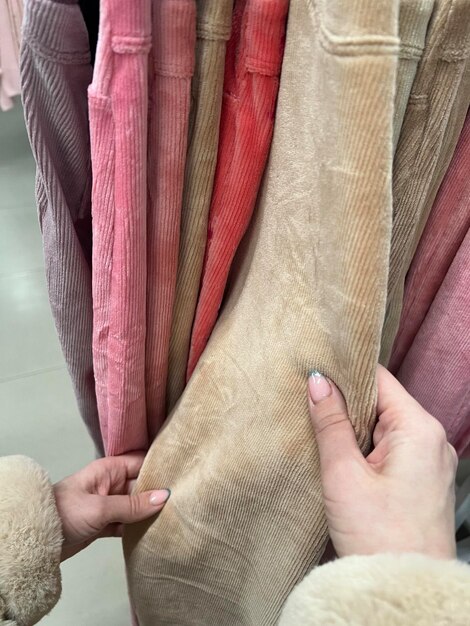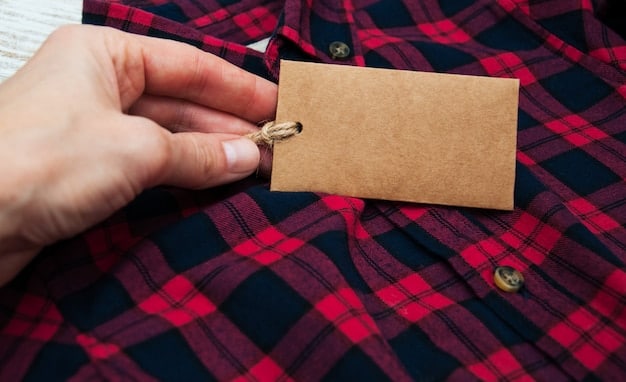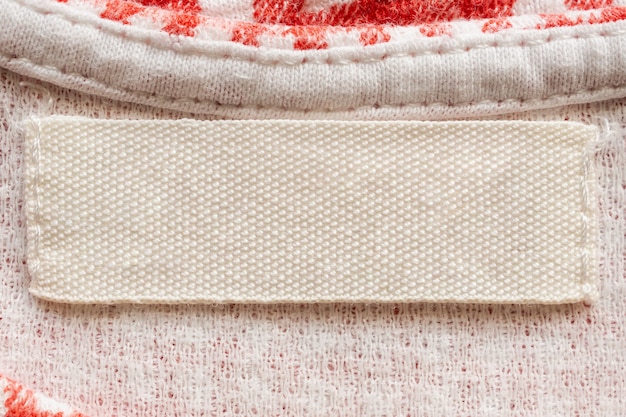Spot Quality Fabrics at Thrift Stores: Savvy Shopper’s Guide

Discovering quality fabrics at thrift stores can be a game-changer for budget-conscious fashion enthusiasts; learning to identify durable materials and well-constructed garments ensures you acquire valuable pieces that stand the test of time.
Thrift stores are treasure troves for unique finds, but discerning quality fabrics can be tricky. This guide, **how to spot quality fabrics at thrift stores: insider tips for savvy shoppers**, will equip you with the knowledge to confidently select durable and stylish materials for your next project.
Mastering the Art of Thrift Store Fabric Selection
Thrift stores offer a plethora of fabric options, but navigating through them requires a keen eye. Knowing what to look for can transform your thrifting experience, allowing you to uncover hidden gems and avoid regrettable purchases.
Understanding Fabric Composition
Fabric composition plays a crucial role in determining its quality. Different fibers offer varying levels of durability, comfort, and aesthetic appeal.
- Natural Fibers: Cotton, linen, silk, and wool are known for their breathability and comfort.
- Synthetic Fibers: Polyester, nylon, and acrylic are valued for their resistance to wrinkles and durability.
- Blended Fabrics: Combinations of natural and synthetic fibers can offer the best of both worlds, combining comfort with enhanced durability.
Familiarizing yourself with these characteristics will aid in identifying valuable finds. Look for labels indicating the fabric composition, and don’t hesitate to feel the texture to assess its quality.

The Touch Test: Assessing Fabric Quality by Feel
Beyond labels, the ‘touch test’ is a practical method for evaluating fabric quality. Running your hands over the material can reveal a lot about its texture, weight, and overall feel.
High-quality fabrics often have a luxurious feel, while lower-quality ones might feel rough or flimsy. This tactile assessment is an essential part of your thrifting toolkit.
Recognizing Premium Textures
Certain textures are indicative of higher-quality fabrics. Fine cottons, such as Egyptian or Pima cotton, have a smooth and silky feel. Linen feels crisp and cool to the touch. Silk is known for its soft and luxurious drape, while wool is resilient and warm.
Becoming familiar with these textures can significantly improve your ability to spot quality fabrics. Practice by feeling fabrics at retail stores and comparing them to thrift store finds.
Weave Wonders: Examining Fabric Construction
The weave of a fabric significantly impacts its durability and appearance. Different weaves offer varying levels of resistance to wear and tear, as well as unique aesthetic qualities.
Understanding basic weave patterns is key to recognizing quality fabrics. A well-constructed weave ensures the fabric will maintain its integrity over time.
- Plain Weave: Simple and durable, ideal for everyday items.
- Twill Weave: Characterized by diagonal lines, offering higher durability and resistance to wrinkles.
- Satin Weave: Known for its smooth, glossy surface and elegant drape.
Examine the weave closely; a tight, even weave indicates higher quality. Additionally, check for any loose threads or irregularities, which can be signs of poor construction.
Decoding Labels: What to Look For
Labels provide invaluable information about a garment’s fabric composition, care instructions, and origin. Understanding how to decode these labels can make your thrifting endeavors more successful.
Pay attention to the fiber content indicated on the label. Look for higher percentages of natural fibers or durable synthetic blends. Also, note the care instructions to ensure the garment aligns with your lifestyle.
Understanding Care Instructions
Care instructions indicate how to properly maintain the garment. Items that require special care, such as dry cleaning or hand washing, are often made from delicate or high-quality fabrics.
Consider whether the care requirements are practical for your lifestyle. While a beautiful silk dress might be tempting, it requires more maintenance than a machine-washable cotton sundress. Balancing quality with practicality is key to making smart thrift store purchases.

Spotting Signs of Wear: Assessing Fabric Condition
Before purchasing any thrift store find, carefully assess its condition. Look for signs of wear, such as stains, tears, or fading. Evaluating these issues can help you determine whether the garment is worth buying.
Minor imperfections can often be fixed with some basic sewing skills or a professional cleaning. However, severe damage might indicate that the fabric is past its prime.
Dealing with Common Issues
Common issues encountered at thrift stores include stains, fading, and pilling. Stains can sometimes be removed with targeted stain removers, while fading might be irreparable.
Pilling, or the formation of small balls of fabric, is often indicative of lower-quality materials. While pilling can be removed with a fabric shaver, it’s a sign that the fabric is prone to wear and tear. Always weigh these factors against the garment’s overall appeal and price.
The Art of Negotiation: Getting the Best Deals
One of the most exciting aspects of thrifting is the opportunity to negotiate prices. Many thrift stores are open to haggling, especially for items with minor imperfections.
Politely inquire about potential discounts. Point out any flaws you’ve noticed and explain why you believe the price should be lowered. Be respectful and reasonable in your approach. Building a rapport with the store staff can increase your chances of success.
- Be Polite: Approach negotiations with a friendly and respectful attitude.
- Highlight Flaws: Point out any imperfections to justify a lower price.
- Know Your Budget: Set a maximum price you’re willing to pay and stick to it.
Effective negotiation can lead to significant savings, allowing you to acquire high-quality fabrics at unbeatable prices. Remember, thrifting is about finding value, and negotiation is a tool to maximize that value.
| Key Point | Brief Description |
|---|---|
| 🔍 Fabric Composition | Check for natural fibers like cotton, linen, silk, or durable synthetics like polyester. |
| 🖐️ The Touch Test | Assess the texture; high-quality fabrics feel luxurious and comfortable. |
| 🧵 Weave Inspection | Examine the weave; a tight, even weave indicates better quality. |
| 🏷️ Label Decoding | Understand care instructions and fiber content from garment labels. |
Frequently Asked Questions
▼
Look for cotton, linen, silk, and wool. These fabrics offer breathability, comfort, and often have a luxurious feel compared to synthetic alternatives.
▼
High-quality fabrics usually feel smooth, soft, and substantial. Lower-quality fabrics might feel rough, thin, or flimsy to the touch.
▼
Assess the stain’s severity. Minor stains might be removable with stain removers, but consider the garment’s value before purchasing if the stain is significant.
▼
Pilling is the formation of small balls on the fabric’s surface. It often indicates lower quality or wear, though it can occur on some high-quality fabrics as well.
▼
Yes, many thrift stores are open to negotiation, especially for items with flaws. Always be polite and reasonable when discussing prices with the staff.
Conclusion
By mastering the art of fabric selection at thrift stores, you can discover unique, high-quality materials that elevate your wardrobe while staying within budget. Understanding fabric composition, assessing condition, and decoding labels empowers you to make informed choices and negotiate the best deals, ensuring every thrift store visit is a successful and stylish adventure.





